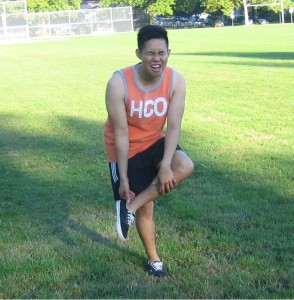Introduction
A bunion is known as a malformation of the joint located near your largest toe, while the scientific term for this is the hallux valgus. People first notice they have a bunion when they observe that their big toe is pointing towards the other toes on the same foot. Other indications that individuals have consist of:
- Noticing a lump on the exterior of the foot

A bunion is known as a malformation of the joint located near your largest toe - Discomfort in the joint; the joint might also become inflamed
- The skin might be rigid, red or hardened where the bunion is positioned
- Finding shoes to fit may be a difficult task.
If your bunion goes untreated, the pain and discomfort won’t get better. That is why it is suggested that you visit your GP once you notice any signs of bunions.
The Causes of Bunions
Scientifically, it has not yet been proven what actually causes bunions. It is known though that bunions tend to be passed down by generation.
Some other causes that medical experts have identified include:
- Putting on shoes that do not fit correctly
- Having joints that are abnormally shaped
- People who have gout or rheumatoid arthritis might experience severe pain if they have bunions.
Bunion Symptoms
Look for a thin, skeletal lump on the foot at the base of the large toe. At times, you might notice hardened skin or a bump that covers the bunion.
There’s often redness, rawness, uncommon sensitivity, or uneasiness at the base of the large toe and on the foot. Lastly, the affected part becomes hot when you touch it.
How To Treat Bunions
When it comes to the treatment of bunions, most specialists suggest non-surgical forms of treating the bunions. These possibilities include:
- Taking painkillers to relieve the pain
- Inserting insoles so wearing shoes is a bit more comfortable
- Putting bunion pads on your toes.
In situations where the bunions do not react positively to certain treatments, the next best option may be surgery. The type of surgery your doctor will suggest will depend on certain conditions such as the symptoms you have experienced, your age, and so forth.
Not Treating A Bunion
There are numerous difficulties that can emerge if you decide to leave your bunion and not seek treatment. Generally, the bunion will get worse and the pain will increase if left untreated. Surgery then becomes necessary, but there is a slight possibility that a person can also have problems once the surgery is complete. This generally only happens in less than 10% of circumstances, but these problems can consist of:
- Inflexible joints in the toes
- The healing process can be delayed even further
- Agony situated near the ball of the foot
- Damage to the nerve endings in the foot
- Inflammation and discomfort that is constant
Related Video On Bunions
https://www.youtube.com/watch?v=xGtSEK5QMoI